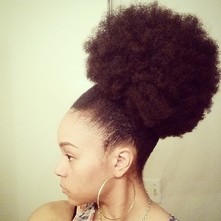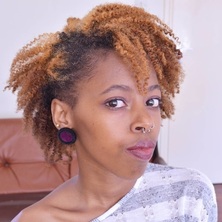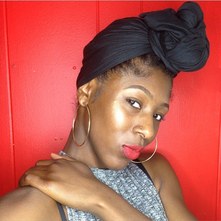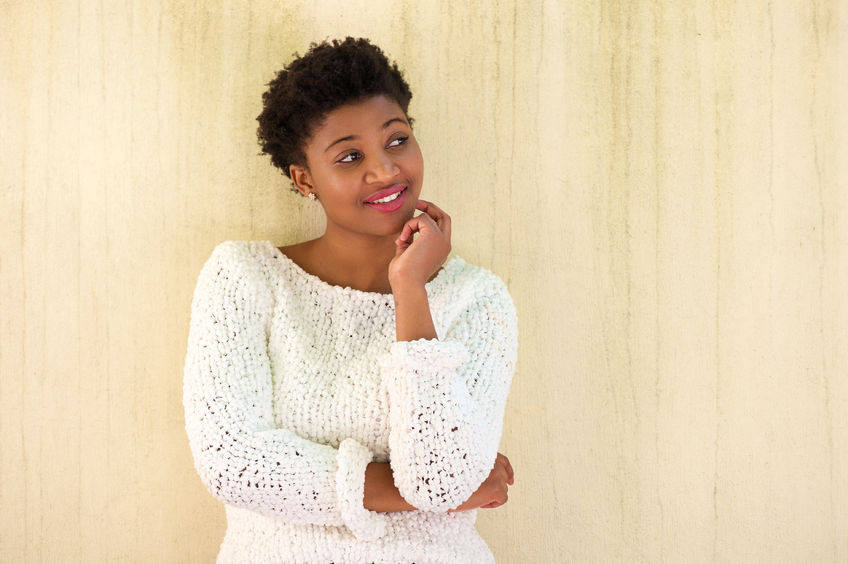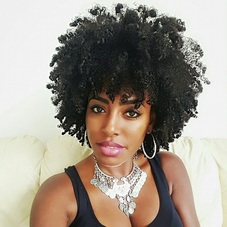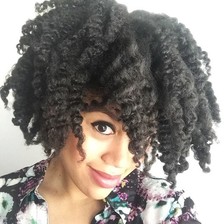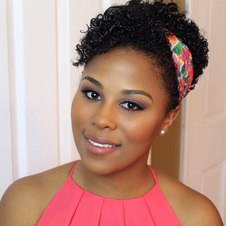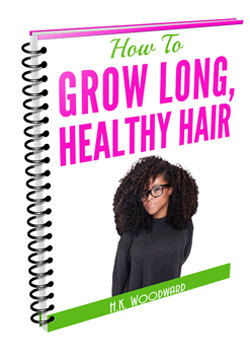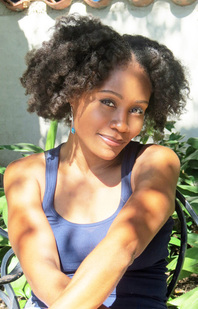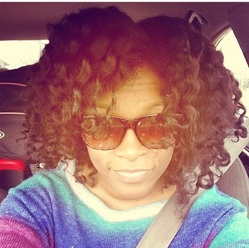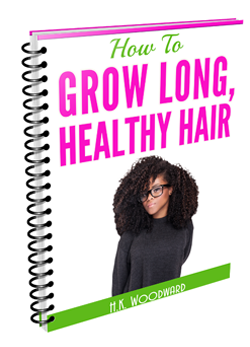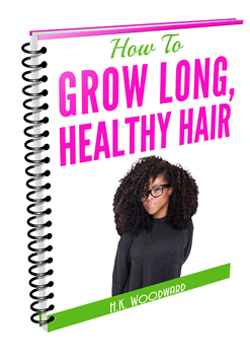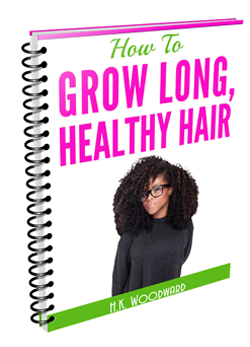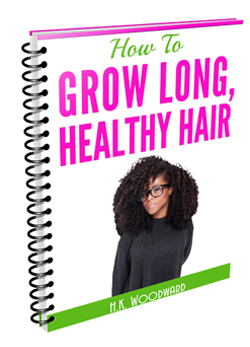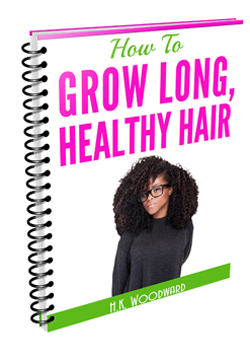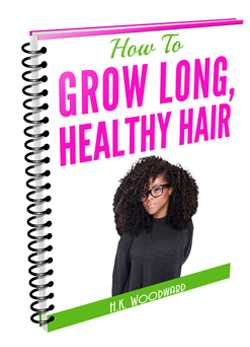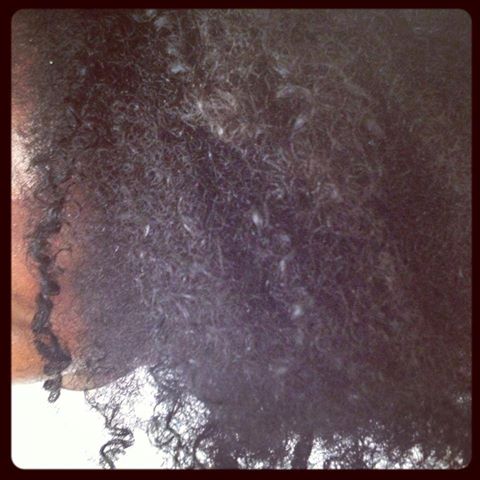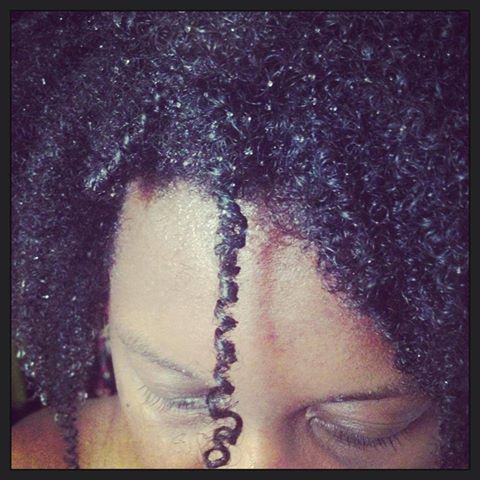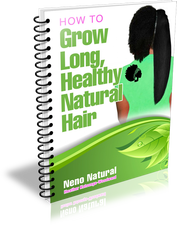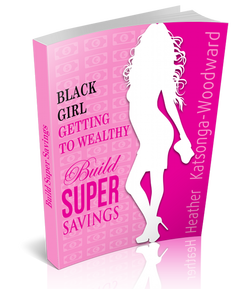|
Copyright: mimagephotography / 123RF Stock Photo
by treasuredlocks.com
As we get older, many of us have to face the fact our hair might want to start showing our age before we are ready. Our hair can begin to gray as early as in our teen years. Graying is fairly common by the time we are in our 30s and 40s. Having your hair dyed in a salon is certainly an option, but it’s expensive, time consuming and who knows what chemicals are used in those dyes? You could dye your hair at home, but again, you have the issue of knowing what’s in the product. And, there is the potential to damage your hair if you don’t do it right. If you’re not a trained professional, dying or relaxing your hair at home can put the health of your hair and scalp at risk. For many years people have been using natural hair dyes. These are usually henna based. These dyes can make hair darker (never lighter). Not only do they not damage the hair, they can actually make the hair healthier, smoother and easier to manage. They are an excellent product for those who can use them. The problem? Gray hairs can be stubborn and difficult to cover. Now there are products that are the best of both worlds. These are henna based dyes with just enough of the chemical components necessary to cover those stubborn grays. These products are easy enough and safe enough to be used at home. Using them saves both time and money. They contain herbs that enhance the health of the hair, while it’s being colored. They are not for everyone. They don’t damage hair partly because they have no ability to lift color. However, because they have no ability to lift color, they cannot make hair lighter. They can only change hair color so much. For example, if your hair is dark, they can add highlights like a reddish tint to it, but you will not be able to get a full red. If these products are suited to you, they are an excellent alternative to harsh chemical products, having to make an appointment and to the on-going expense of having your hair dyed on a regular basis. Many of our customers are freeing themselves from the salons and taking better care of their hair at home. Article courtesy of Treasured Locks, LLC Treasured Locks has been in business since 2002 providing expert advice and premium products for at home hair care. Treasured Locks specializes in the care of natural hair serving tens of thousands of customers all over the United States. For more information, please see www.treasuredlocks.com. If you’re interested in the products mentioned in the article, please visit this page.
Copyright: mimagephotography / 123RF Stock Photo
2 Comments
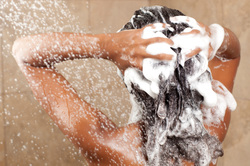
Sulfates are a detergent or if you want to use the fancy term, they are a "surfactant". They are regularly used in the formulation of shampoo.
If you have very oily hair or if your hair has a massive amount of product build up, they are okay to use. Almost every shampoo that is commercially available, however, contains sulfate. "Greasy" or oily hair is a common problem for white folk but black people tend to have the opposite problem, dry hair, so the omnipresence of sulfate containing shampoos can present a bit of a challenge! Why are sulfates bad for natural black hair?
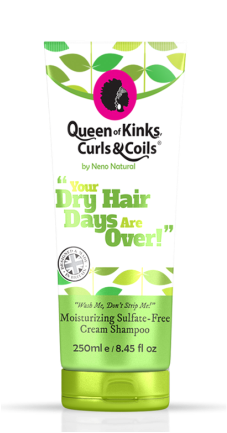
If you go for a sulfate-free shampoo you will be better able to retain moisture and this in itself will promote better growth of hair and better length retention.
That said, not all sulfate-free shampoos are made equal. Some manufacturers combine so many surfactants into one shampoo making it more harsh than a sulfate-containing one - sigh. Read this for tips on how to shop for a shampoo. Carol's Daughter Black Vanilla Moisture & Shine Sulfate Free Shampoo For Dry Hair and Dull Hair, with Aloe and Rose, is designed to clean your hair without stripping it of all the amazing natural oils.
When you see an ingredient in your shampoo with the word "Sulfate" on the end it means that the molecule has been combined with sulfate to make it more soluble. For instance, oils aren't soluble in water but if you sulfate an oil it becomes much more water soluble. Similarly, ammonium and sodium are much more soluble in water when they have been through sulfation. Sulfates are also skin irritants.
Of all the surfactants, Sodium Lauryl Sulfate, SLS, is the most irritating to skin so it is normally combined with other surfactants to make it less irritating. Ammonium Lauryl Sulfate (ALS) is less irritating than Sodium Lauryl Sulfate (SLS). As you know, I, like most other natural hair bloggers, don't recommend sulfate shampoos. Although it is one of the most irritating surfactants SLS is widely used in shampoos because it is:
Sodium Laureth Sulfate (SLeS) is less irritating than Sodium Lauryl Sulfate (SLS) too. Just like SLS, SLeS thickens easily but it has the additional benefits of:
Ammonium Laureth Sulfate has all the benefits of Sodium Laureth Sulfate (SLeS) but is even less irritating to skin. So if we were to rank these four sulfates from most irritating to least irritating we would have:
Note SLES is not the same thing as SLeS:
Overall, sulfates are effective at cleansing greasy hair but tend to make dry hair even drier.
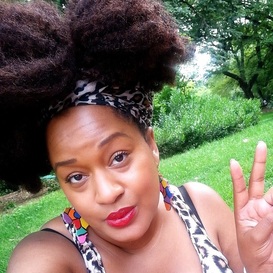 Check out Queen Carmen's Hair Journey & Regimen Check out Queen Carmen's Hair Journey & Regimen
I have been asked this question a few times so I thought it’s high time I gave a proper explanation. What makes one product really cheap and another one more expensive?
Product Price and Product Quality Yes, there is definitely a correlation between the quality of a product and the price but it isn’t a perfect relationship – something that costs £20 isn’t necessarily two times better than a £10 product. That said, some products are cheap for a reason: they use cheap quality ingredients that neither nourish your hair nor your body. Case in point, I was in a Poundland (think, The Dollar Store) – basically as budget as it gets and I saw a 250ml product of “Body Butter” – I couldn’t believe it. There is no way you can produce a body butter that cheaply no matter what your volumes are. So I picked up the bottle to read the ingredients and true to form there was only one vegetable butter on the list and it was very far down the list of ingredients suggesting there wasn’t much of it in there. Ultimately the product was called a butter because they had created a buttery texture but most of it was water and factory made ingredients. Now, there is nothing inherently wrong with most factory ingredients and anything that comes in a can or bottle even Mayo and beans has to contain some form preservation; however, having too much of them reduces the benefits to hair (and skin) compared to a product that use a healthy balance of both farmed and manufactured inputs. A balance needs to be achieved between hair benefits and prolonged shelf life. Sometimes A Cheap Price Hides Another Story Another case in point: I bought a bottle of “Pure Jojoba” because the price was uniquely low; it was too good to be true, I just had to have it. When I got home I thought the product smelt a little “off”. A look at the ingredients list confirmed it wasn’t jojoba but a jojoba and grapeseed oil blend – the product label was lying on the front, calling itself “Pure Jojoba” when it wasn’t! Grapeseed oil is a good oil but it is cheaper than jojoba and has different benefits. I wanted jojoba for the unique benefits that it offers so I was annoyed and disappointed. The price was too good to be true for a reason. Product Price & Unique Ingredients When it comes to product making the more unique the ingredients you use the more expensive the product will be. Shampoo is a good example here. 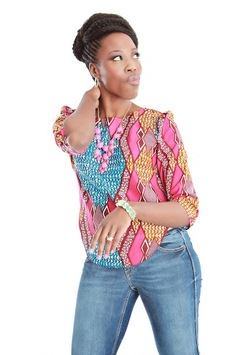 Check out Queen Christine's Hair Journey & Regimen Check out Queen Christine's Hair Journey & Regimen
Because sulfates were so widely used in shampoo (and they still are) using them as a cleanser is really brings down the cost of making a shampoo. Once consumers switched on to the fact that sulfates were too strong a cleanser for dry hair types and possibly had other negative effects some businesses decide to use alternative cleansers.
Using a cleanser other than a sulfate pushes the price up. Some alternative cleansers, e.g. cocamidopropyl betaine, have grown in usage so they are more widely available and therefore more affordable to use as a product ingredient. That said, milder cleansers are still being developed. Choosing to use a non-mainstream ingredient to improve product quality hikes the product price right up. How The Big Dogs Keep Prices Low There are three ways that big manufacturers keep prices down:
Product Price and Experience Some companies want to provide more than just a product to a customer. They want to provide a great experience, great customer service and a fabulous customer relationship. To provide this extra service their product will cost more. 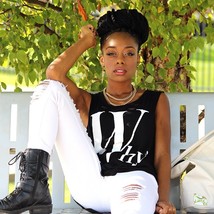 Check out Queen Gloria's Hair Journey & Regimen Check out Queen Gloria's Hair Journey & Regimen
Product Price and Status
Last but certainly not least, some customers want to buy products to show their status a little or to feel different to the masses. If you feel you work harder than most people then you want products most people cannot afford. You want a branded hair or body product that shows you care about quality. You don’t want “good enough” products, you want “best in category” products. Have you ever had a friend who goes from being on your level and all of a sudden they get a job paying them triple? They get a new place to live and when you go over to the house warming party everything in their place tells you upfront, I’m on another level now. Even the hand wash in the bathroom is a superior and exclusive brand. You look on in admiration and just think, I need to work hard and get myself nice stuff like this. Premium products differentiate themselves by going above and beyond on product packaging as well as other small branding elements that the premium consumer cares about. It’s why you choose to buy a Mercedes Benz over a Toyota when they both do exactly the same thing. In summary, a product may be more expensive because:
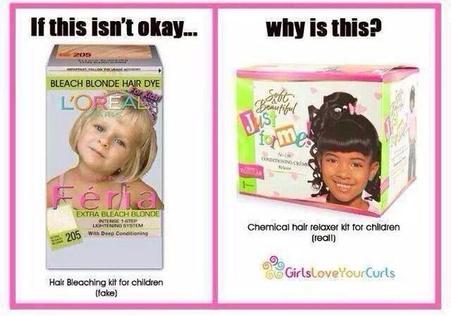
Denise Blaize @MsDBlaize shared this image with me on Twitter.
My very initial reaction was to imagine those little girls that are "forced" into beauty pageants by their mother and made to change themselves in every which way: hair, makeup, body, clothes. I hate those competitions because kids that young do not need to be that focused on the way they look. I can imagine letting a kid enter one of those for fun but when it becomes a lifestyle of contest after contest, there's an issue. Anyhow, as soon as I had those initial thoughts upon seeing the hair dye, I went straight to thinking about my perception of hair and relaxer as I grew up. As you may know I was born and bred in Malawi, Africa. In addition to her day job, my mother was into hair and started a hair salon as a side-gig when I was very young. Lots of new stuff was tried out on little Heather and I had relaxed hair from like age 4/5. Now, I'm not mad at my mum at all. Relaxer was marketed as a solution for hair management and there wasn't any information at the time that would suggest it could cause any long term harm to hair growth or scalp issues. I did get burned every time I had a relaxer but as we say in my language, "Kutchena ndi kupilira", "Beauty is persevering". CHEMICALS A few people on the Facebook page immediately jumped onto the chemicals are dangerous argument. I don't want to talk about that in this post. My personal belief is that the chemicals are obviously safe enough for human use but in my personal experience, based on my own head, over a 20 year period relaxer started making my hair thinner and the strands weaker. But as I said, this post is not about chemicals - ignore "chemicals" in any comments. I'm interested in the message we send to little girls. ULTIMATE BELIEFS Ultimately, I subconsciously believed the following:
Underlying those subconscious beliefs was the even more lethal belief:
Relaxer was not just an alternative look, it was "the look" I needed to have. It took a hair tragedy (thinning hair) for me to revise my views. LET KIDS BE KIDS I think children should be allowed to be children. One of the most important parts of growing up is accepting yourself as you are. Persistent dyeing and relaxing of hair doesn't give kids the right message. Changes to hair should, in my opinion, be non-permanent to show the kid this is just for variety but you look great as you are. What do you think? What did you grow up believing was acceptable or now, subconsciously or consciously. Comment below or on the Facebook post. Heather x
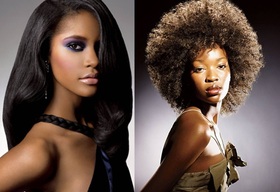
I got asked this question today.
The answer for this is simple, you can't. When hair is relaxed the chemical bonds in hair are permanently dissolved. This process cannot be reversed in order to become natural. If you want to go natural you can either transition, big chop or do the stepped chop. Some hair types don't take very well to relaxer so they never really straighten properly. I have been told by at least one person that because of this when they went natural they didn't have to transition in any way; this was only because the hair never straightened in the first place not because the relaxer process had been reversed. You might also like: How to Go Natural: Big Chop vs. Transitioning. #BlackHair An Alternative to the Big Chop: The Stepped Chop!
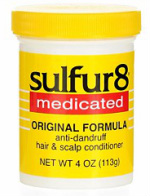 Personally, I wouldn't use this. Personally, I wouldn't use this.
Petroleum aka petrolatum is actually a highly effective sealant. If your hair is properly moisturised using a petrolatum-based product on top will compeletly stop any moisture coming in or going out.
But that's where the benefit stops, the same benefit is also a disadvantage because petrolatums and mineral oils leave a heavy film over hair making any following moisturising efforts hard or even completely pointless. Petrolatums and mineral oils have no moisturising ability at all! If your hair is looking sleek and shiny after you use them, it's nothing to do with moisture, these chemicals just happen to be greasy-textured so that glow is purely cosmetic. If you have ever relaxed your hair you will remember vaseline being put round the edges of your hair and on your ears to prevent burns. That is how strong a barrier petrolatum is. Vaseline is pure petrolatum. 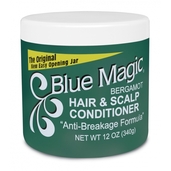 Personally, I wouldn't use this. Personally, I wouldn't use this.
If petrolatum isn't so good for hair why's it so pervasive in black hair products
Because it is cheap! Should I immediately stop buying anything with petrolatum? Not entirely. I recently learnt from the Science of Black Hair that the higher an ingredient is listed on packaging, the more of it there is inside the product. So if mineral oil and petrolatum are listed quite low down, there isn't much. 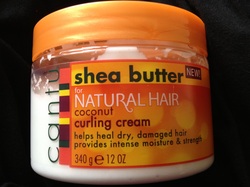
One product that my hair loves but that has petrolatum is my Cantu Shea butter! Petrolatum is about 6th or 7th on the list. The only problem is that even from that you can't tell what percentage of the product is petrolatum.
Personally, I don't think petrolatums and mineral oils are entirely bad. Nothing keeps my lips crack-free like vaseline and when I was a kid good old cheap vaseline kept my skin looking shiny. BUT there is one difference between skin and hair: skin is constantly being rubbed by clothes, people etc so the petrolatum rubs off. Your hair is not being constantly rubbed, if it was you would probably have mega-high breakage rates!
 Structure of a paraben Structure of a paraben
Parabens are preservatives. They prevent bacteria, fungi and other microbes from growing in cosmetics and as such help them to last longer.
Examples of parabens include butylparaben, ethylparaben, isobutylparaben, methylparaben and propylparaben. Typically a product will contain more than one paraben plus they are normally used in combination with other preservatives to target different types of microorganisms. Parabens can be found in 90% of cosmetics: lotions, mascaras, foundations, lipsticks, deodorants, shaving gels, shampoos, conditioners and other day to day products. Parabens are not bad for your hair as such but they are thought to be bad for the body; they have been connected to breast cancer and although studies haven’t conclusively said that parabens cause cancer, cancerous cells were found to contain parabens in a higher-than-normal density. It is thought that parabens disrupt the function of hormones by mimicking oestrogen. Increased exposure to oestrogen is associated with a greater risk of breast cancer. In a 2002 study parabens were found to reduce the sperm count of mice. However, the concentration of parabens was 100 times higher than that found in the average cosmetic product. The parabens found in make-up and other cosmetics are synthetically produced but parabens do naturally occur in certain foods, e.g. blueberries Only a minute quantity of parabens enter the body through food. Having parabens in so many products means they enter the body through the bloodstream and we thus might be getting higher concentrations than is healthy. The current official US government guideline is that parabens are safe as used in cosmetics. Personally, given the current state of flux on whether or not parabens are harmful, I wouldn’t freak out if you find parabens in some of your products. That said, I would avoid them where possible to keep on the safe side. |
I now blog about wealth creation - so if you have any money questions meet me there, you can do all sorts of cool things like leave me a voicemail.
By Heather Katsonga-Woodward
I was a natural hair blogger and mixtress living between London & Chicago from 2012 to 2017. I always thought I was 4C but some say 4B; images below - you decide! Heather xx Categories
All
Archives
November 2016
|

